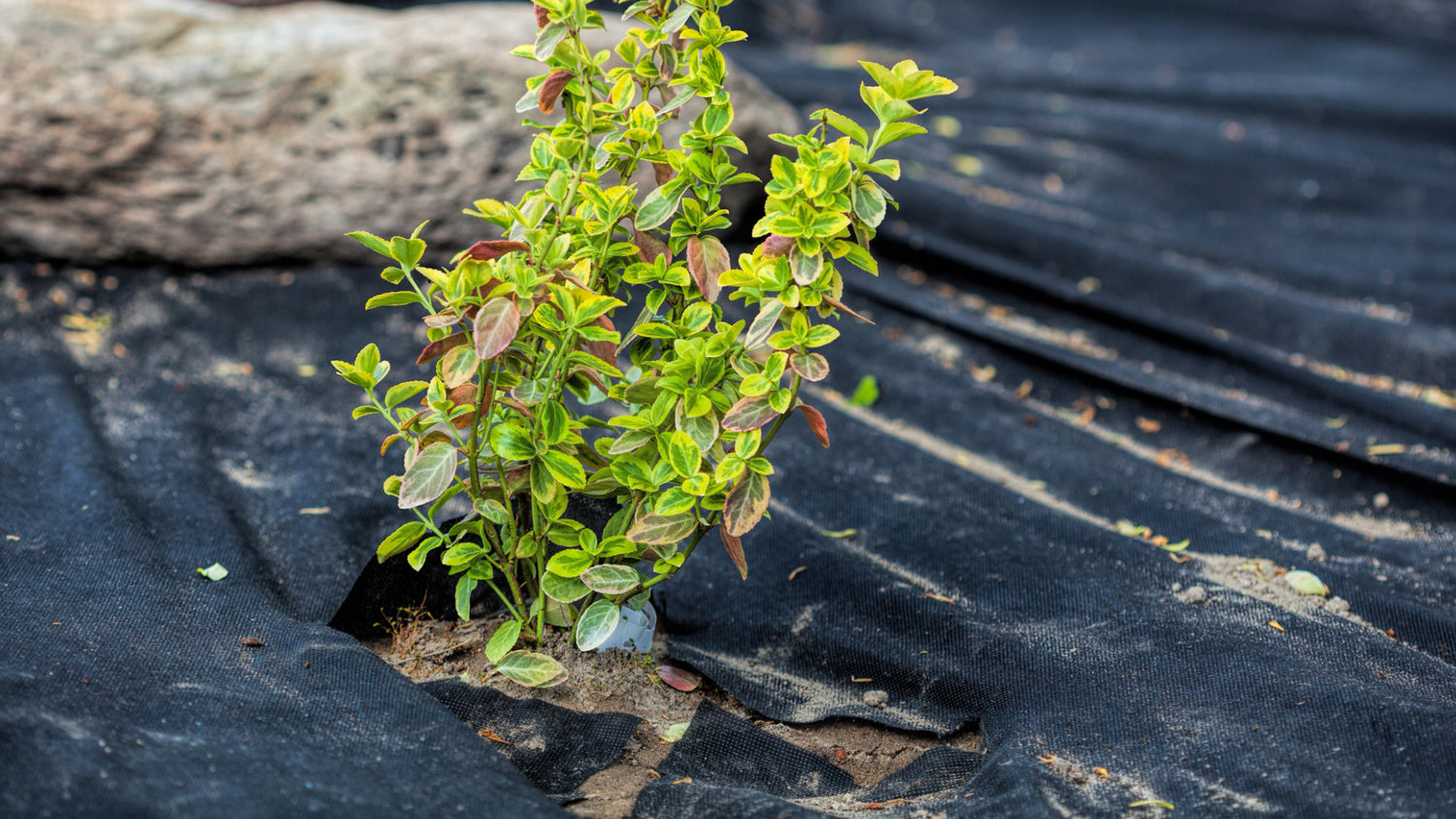Discover the solution to the annoying weed problem in your garden: weed control fabric! Protect your beds from weeds and make gardening easier. Learn step-by-step how to install the fabric correctly.
What is the benefit of weed control fabric?
For many gardeners, weed removal is one of the most disliked gardening tasks. Once you've cleared one bed of weeds, they'll reappear somewhere else. It's a never-ending cycle. There are various ways to control weed growth. One of the most effective is weed control fleece.
The weed control fabric is rolled out over the bed, secured with ground anchors, and instantly, weeds will stop growing there. Sounds too good to be true? But it's that simple! The garden fabric inhibits weed growth by blocking them from reaching sunlight. Weeds that grow on the fabric due to pollen cannot take root and are therefore easily removed.
The use of such a fleece also offers other benefits. Not only does it help with weed control, but it also improves soil structure by retaining moisture. This is especially important during the dry summer months, when water is a precious resource. Furthermore, the fleece retains heat and can thus protect plants from ground frost.
Step by step: from preparation to laying and fixing the weed control fabric
Applying weed control fleece is an effective way to protect your garden from unwanted weed growth. Preparing the bed is crucial for success. Start by thoroughly removing weeds and organic debris such as old roots and large stones. This preparatory work ensures that the fleece is not damaged by sharp objects and provides a smooth surface for laying.

After preparation, roll out the weed control fabric. Ensure that the individual panels overlap by 5 to 10 cm to prevent gaps for weed growth. The fabric is easy to cut with scissors, allowing you to precisely adjust it to the shape and size of your bed.

If plants are present in the bed or are to be planted, cut planting crosses into the fleece. These allow the plants to be planted without having to remove the fleece. For existing plants, the fleece is carefully pulled over the plants or cut to fit and arranged around them.

Ground anchors are recommended for securing the weed control fabric. Pay particular attention to the edges, overlaps, and interfaces to ensure the fabric stays in place even in wind and weather. A distance of 50–60 cm between ground anchors is ideal.

Finally, the weed control fabric should be covered with a layer of mulch, wood chips, gravel, or similar materials. This 5 to 7 cm thick cover protects the fabric, retains additional moisture in the soil, and promotes healthy plant growth.

These steps will not only help keep your garden weed-free, but will also improve the appearance of your garden and significantly reduce maintenance. This method allows you to focus more on the joy of gardening and less time weeding.
The right fleece for every garden project
In the world of gardening, it's crucial to choose the right material for each specific project. Weed control fabrics offer a versatile and effective solution for weed control in various garden areas. Depending on the requirements and type of garden bed, different thicknesses of weed control fabric can be used to achieve optimal results.
For light applications, such as fruit and vegetable beds, a weed control fabric with a density of 50 g/m² is ideal. This lightweight garden fabric is characterized by its high water permeability, allowing for quick watering of plants without causing waterlogging. It effectively protects the bed from weed growth while ensuring the plants receive the moisture they need.
For mulched beds that require good air and moisture circulation in addition to weed control, fleeces with a thickness of 80 g/m² or 100 g/m² are recommended. These fleeces are not only robust but also porous enough to prevent mold growth in the mulch, which promotes soil and plant health.
In areas with heavy weed infestation or when creating gravel beds, an even thicker fleece of 150 g/m² or 180 g/m² is recommended. This sturdy fleece provides an excellent barrier against weeds while also being extremely resistant to physical stresses, such as those that can occur in gravel beds.
By selecting the right weed control fabric based on strength and function, gardeners can ensure their beds remain well protected and low-maintenance. This allows for a longer lifespan for the beds and less work in the garden.
Please visit our shop , where you will find all the weed control fabric thicknesses mentioned.
Good luck with your gardening!
Our instructional video shows step by step how to lay the weed control fleece.


